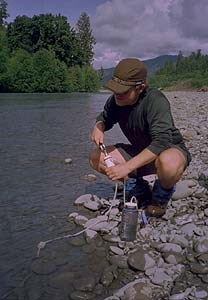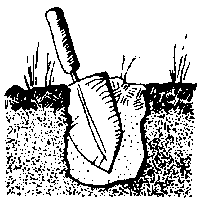
Treat All Drinking Water! Water is readily available in most areas of the park, though there are exceptions. On higher ridges and in some areas along the coastal strip, water may be hard to find during late summer. Inquire about water sources. Water from coastal streams typically has a harmless “tea” stain from root tannins but contains invisible microorganisms that can cause illness. Giardia lambia is a protozoan that can cause mild to severe diarrhea or severe intestinal distress requiring medical treatment. Giardia could exist in any water source in the Olympics. Human Waste 
Catholes Toilets Only human waste and toilet paper are to be deposited in toilets. Other materials, such as hygiene products and disposable diapers, interfere with composting processes and clog the pumps used to empty vaults. These materials also introduce nondegradable material and fill toilets too quickly. Washing Waste Disposal on Mount Olympus |
Last updated: March 9, 2017
